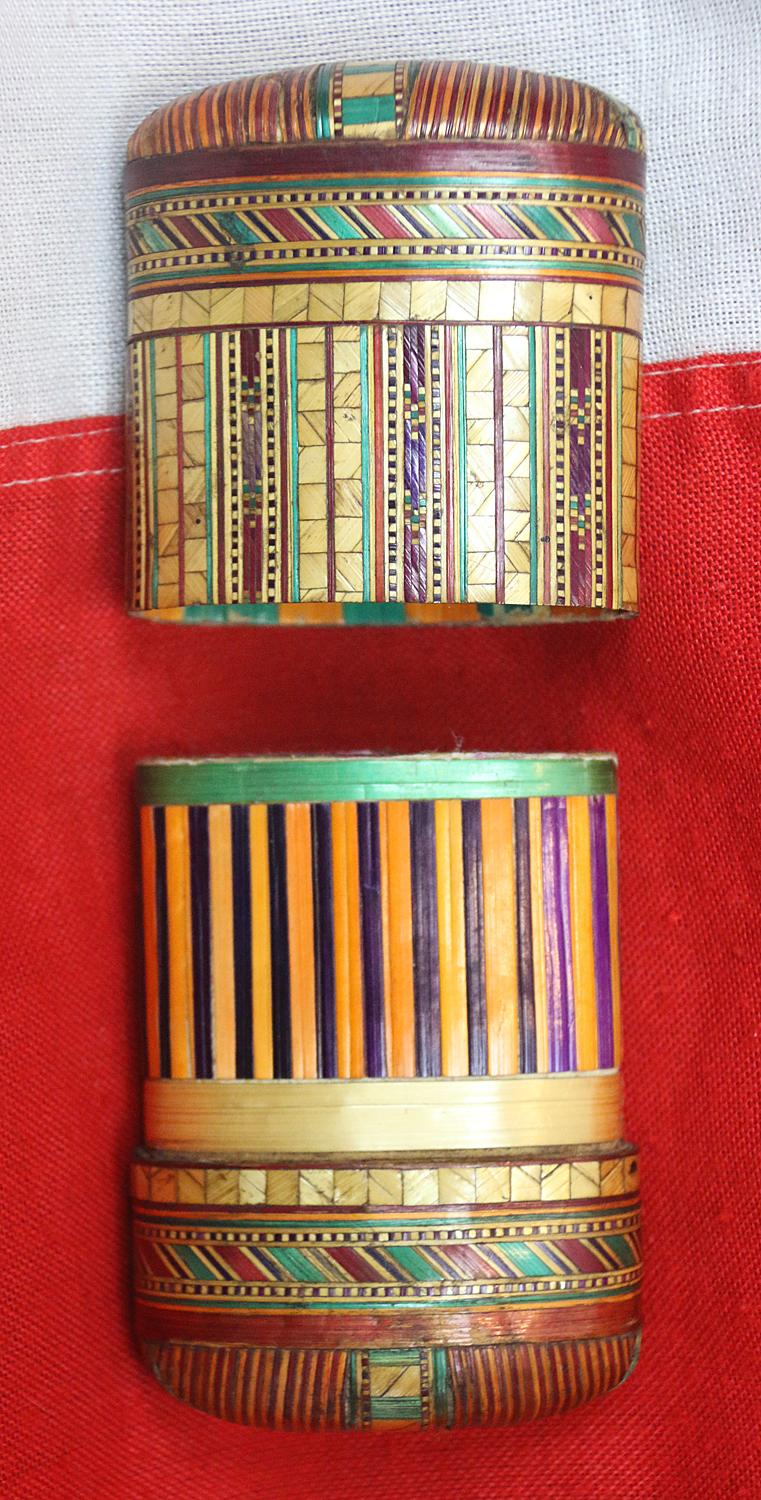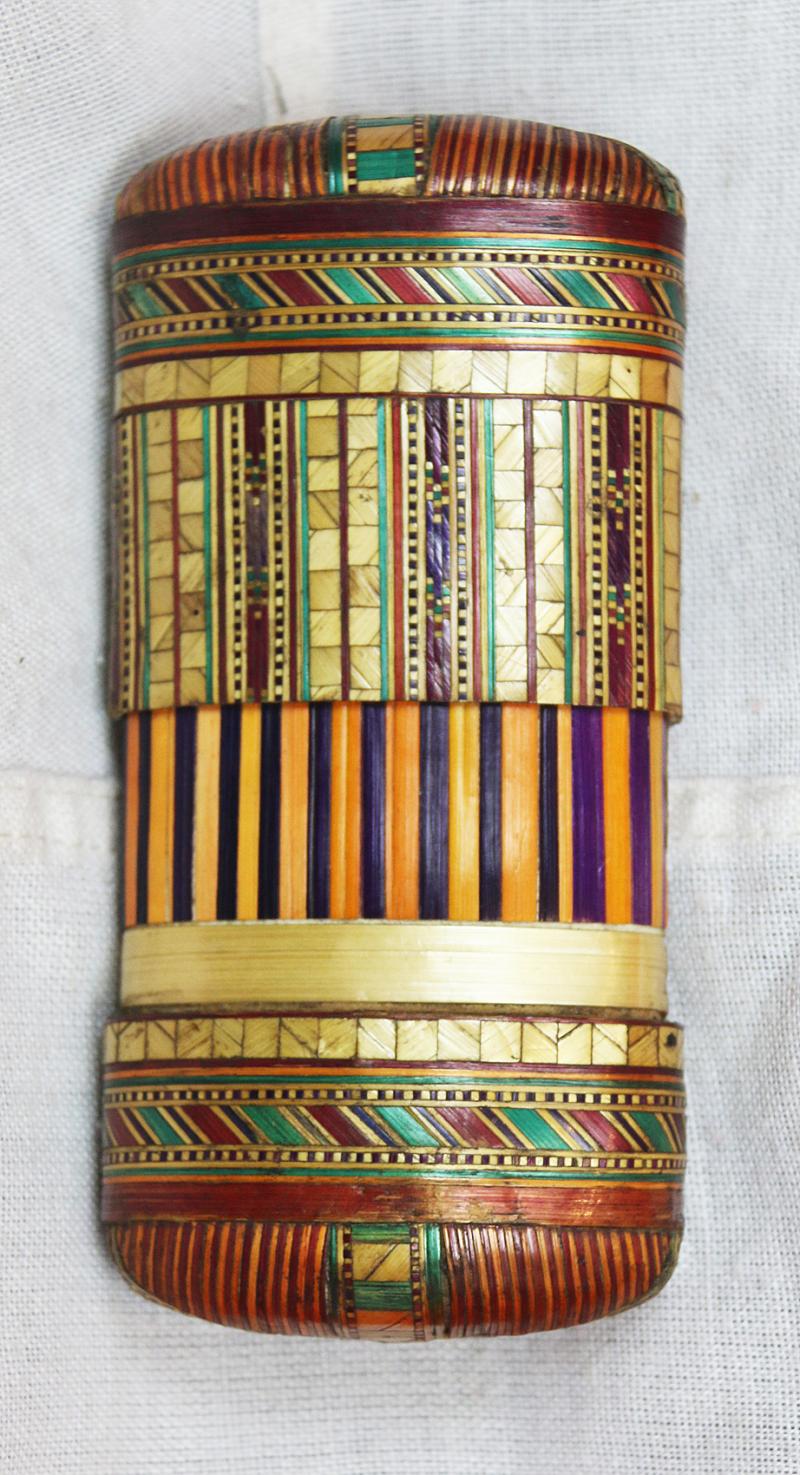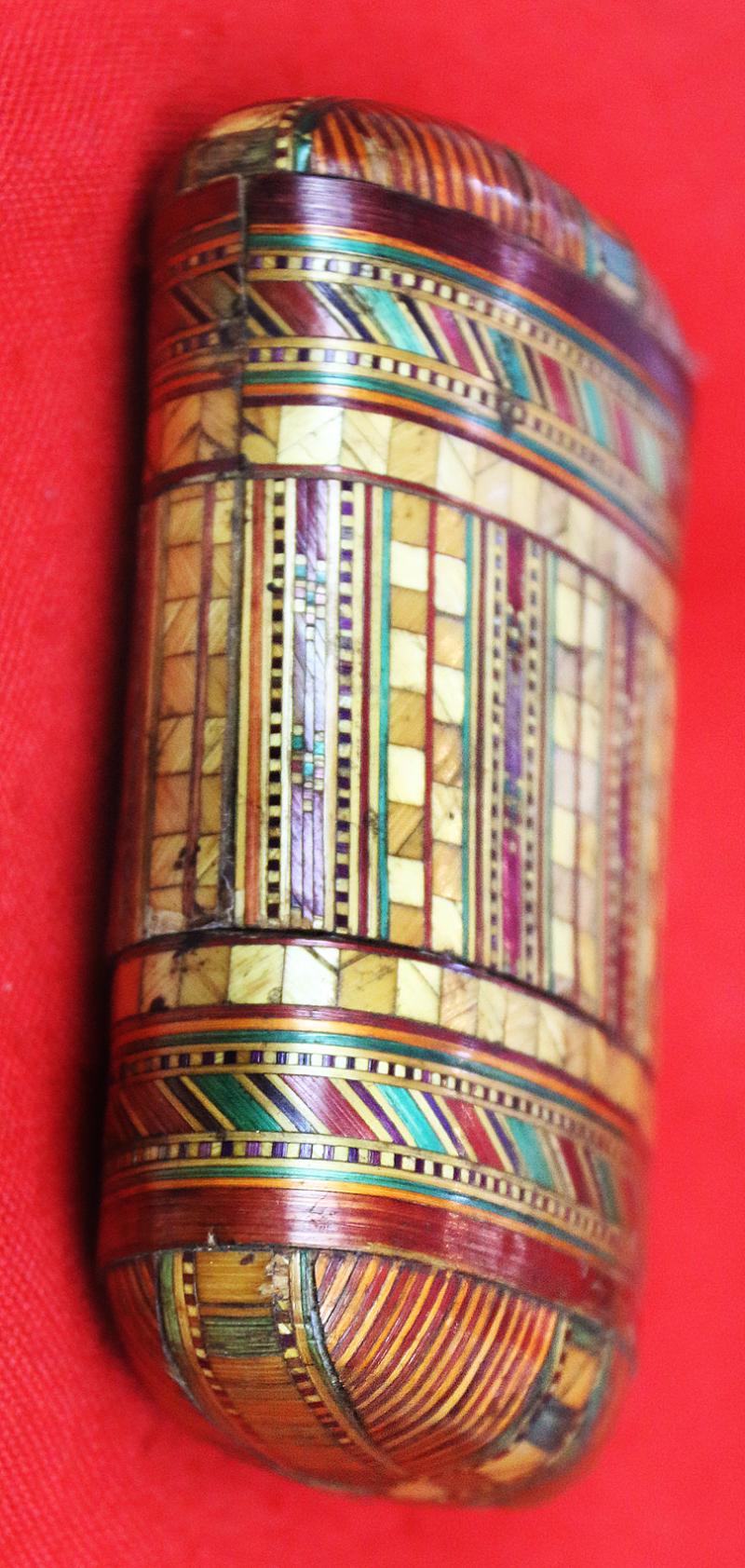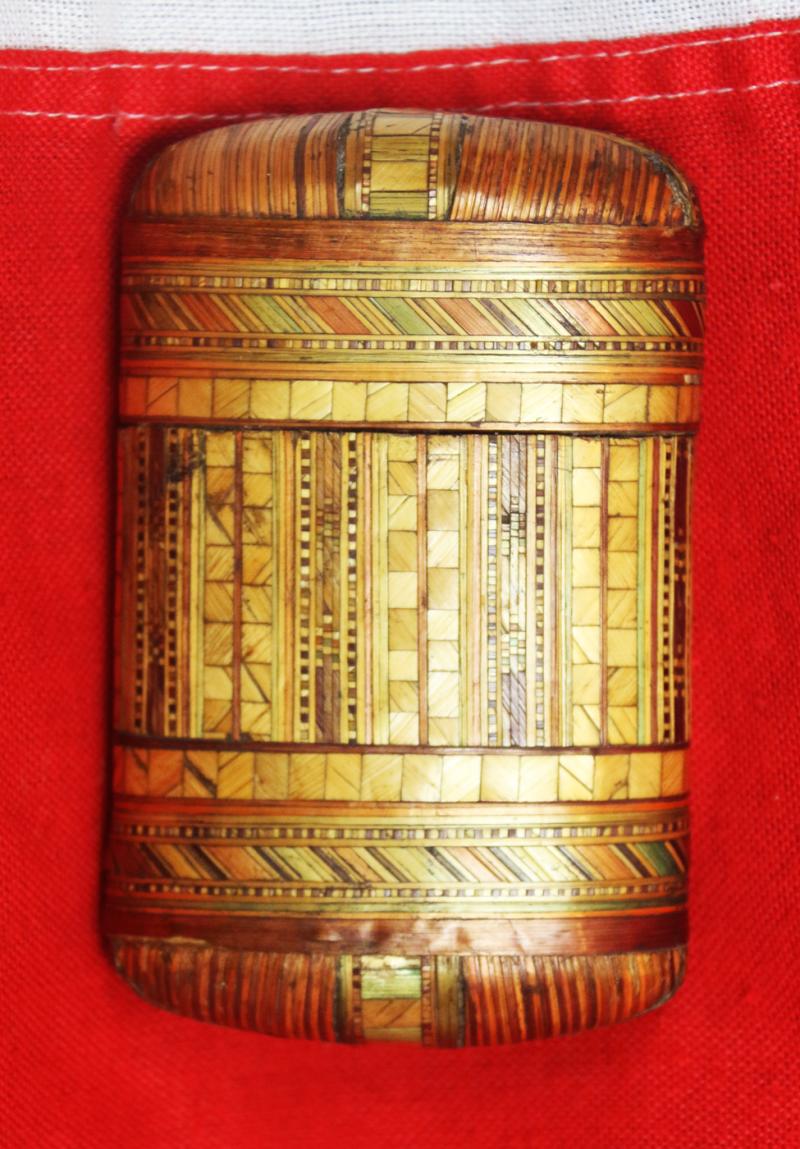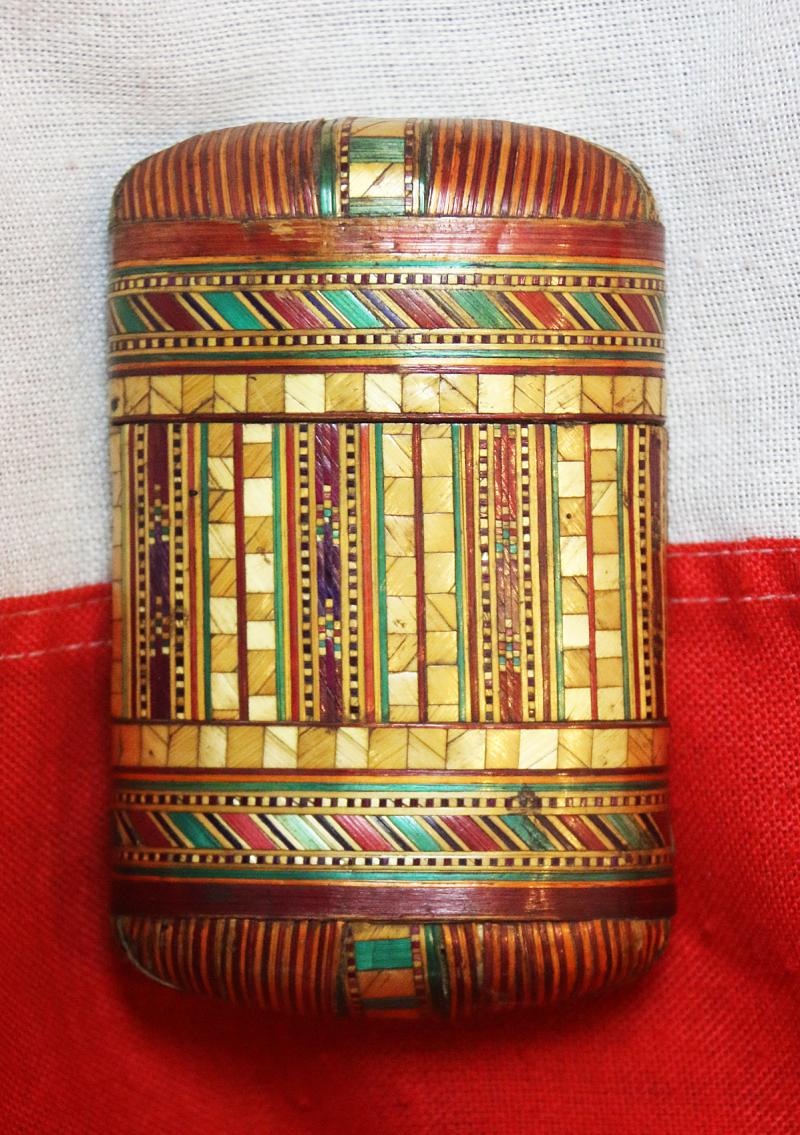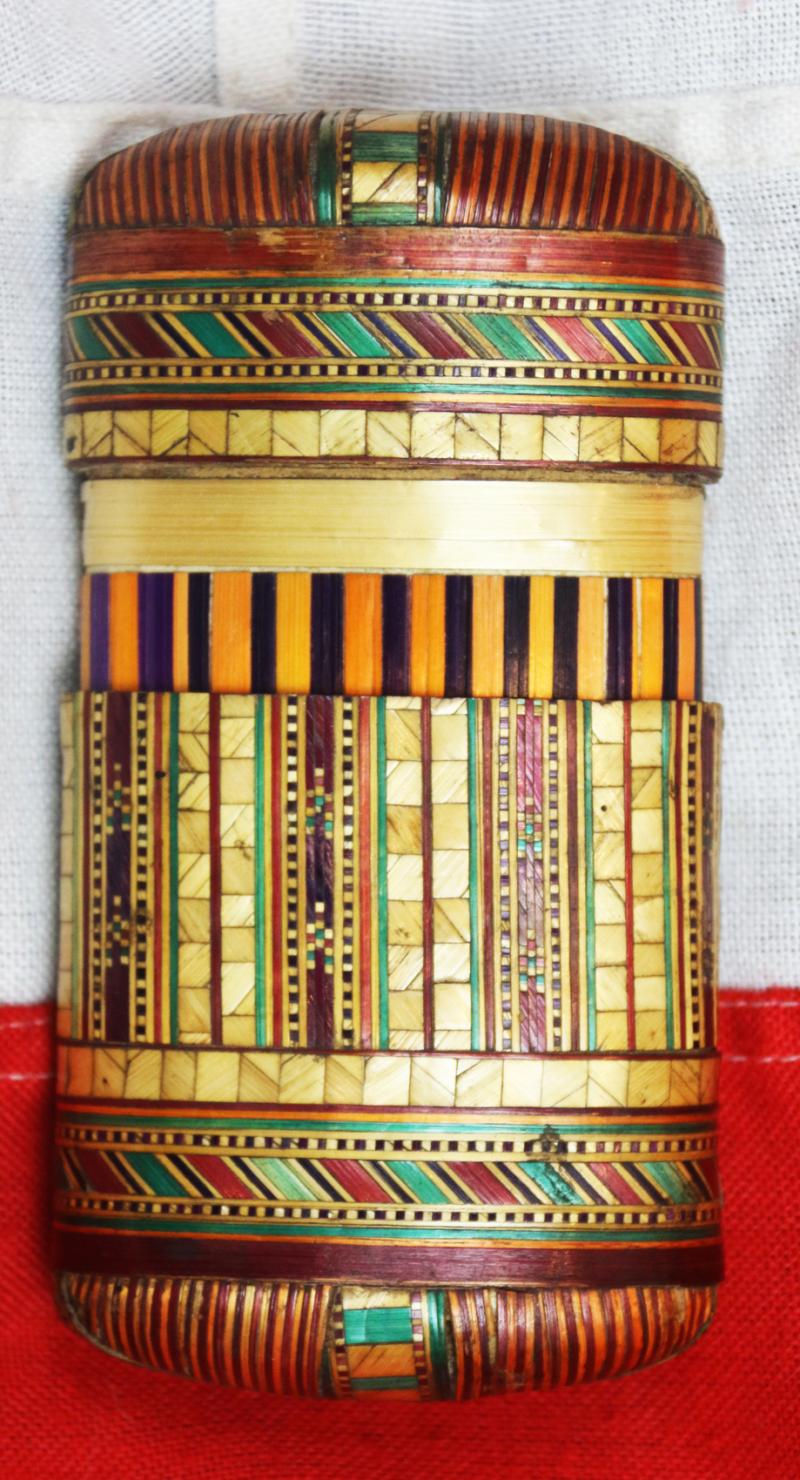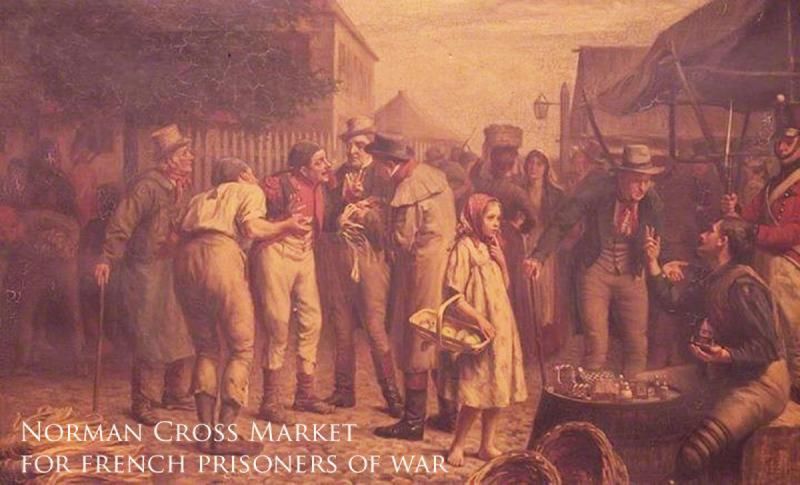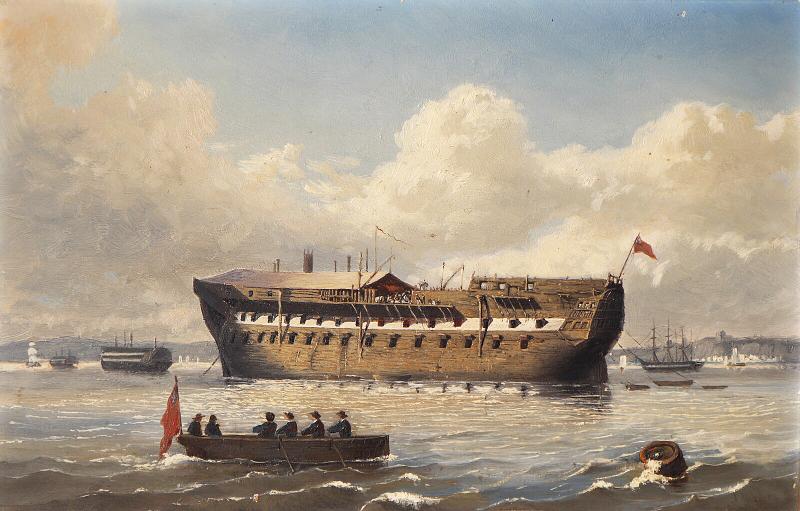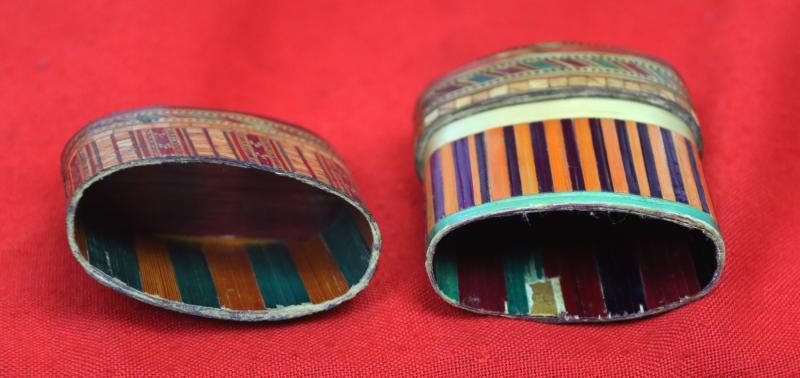NOW SOLD A Superb & Stunning, Napoleonic War French 'Prisoner-of-War' Cigar Case, Circa 1800
One of the best condition examples we have ever seen, the vibrancy of the colours is extraordinary, and the technical detail of the minute inlay is extraordinary.
It is incredibly similar workmanship, and colour based on Egyptian sarcophagus art. We believe this may strongly indicate the pow sailors were involved in the Battle of the Nile and admired the Ancient Egyptian mummies. Napoleon was notoriously well known as a looter of great art from the countries he invaded, and his ships may well have contained such sarcophagus for the French matelots to admire, and thus were strongly influenced by the stunning geometric artistry and contrasting colour combinations from ancient Egypt.
{see photo in the gallery no 10 of the incredible similarity to an Egyptian sarcophagus artistry of strong colour combinations and geometry, and the compared prisoner-of-war cheroot case}.
In wood covered in straw-work parquetry crafted by a French prisoner of war during the 1793 - 1815 War between Napoleon's French Navy and the Naval forces of King George III of England. This piece was hand crafted by a captive, French, master artisan who created this unbelievably detailed cheroot case with nothing but coloured pieces of straw, paper and scraps of wood, {often taken from their bunks} for a frame, and assembled using boiled glue. This piece would have taken weeks to hand create, and the tiny pieces of straw are somehow cut into thousands of minuscule pieces and assembled in tiny multicoloured geometric patterns. A very similar quality piece of prisoner of war work to a piece that is on display in the Burghley House Collection.
Made by the captured Napoleonic and French wars French Prisoners-of-War in the early 1800's in order to subsidise their meagre prison rations, and this fine piece is straw-work is pristine condition in colour and near unfaded showing wonderful contrasts.
Great Britain was at war with France continuously from 1793 to 1802. Hostilities ceased briefly in 1802, but conflict soon recommenced. The Napoleonic Wars continued until 1815, when Napoleon?s forces were finally defeated at Waterloo.
For example,iIn 1796 the first prison to house French prisoners was built at Norman Cross, some 5 miles north of Peterborough. Conditions must have been both harsh and crowded; disease killed more that 1,700 inmates between 1797 and 1814.
To supplement their rations and to provide small income, some prisoners made ornaments, models and toys, which they were allowed to sell. The materials used included straw, wood, bone and even human hair. Many of the items made were extraordinary in their complexity and design and were always very desirable to collectors. The proximity of Burghley House to the camp meant that members of the Cecil family acquired many fine examples.
Those displayed at Burghley include a number of containers made of wood with applied decoration of coloured straw, a stationery box, a set of bone spillikins in a pocket case, a framed straw-work picture of the house built for Napoleon Bonaparte on St Helena, to where he was exiled, a bone set of dominoes and playing cards and a detailed model of an 80-gun ship-of-the-line with hair rigging..
Two photos in the gallery are of New Cross market for the French POWs to sell their wears and hand made pieces to the locals and nobility who used to travel to such markets to buy these pieces that were incredibly popular with members of the aristocracy and high society. a a painting of a prison hulk in Sheerness, often made from the hulks of a scrapped old British man o'war, or a captured, damaged French or Spanish frigate,
In the gallery we show the base and lid of an anthropoid inner coffin of Seshepenmehyt, made in circa 600 bc, of sycamore fig wood, with elaborate polychrome painted and inlaid decoration. The coffin is a well-proportioned and fully three-dimensional image of a mummified entity standing upon a plinth and supported at the back by a pillar. The face is painted green. Below the collar the goddess Nut spreads her wings over Seshepenmehyt, and the scene of judgement and presentation to the gods is on the breast. In a small panel below, the Ba of the deceased is shown returning to the mummy, laid on its bier within the tomb, with canopic jars below. Otherwise the exterior of the coffin is dominated by blocks of inscriptions running vertically and laterally. These texts are written on backgrounds coloured alternately red and pale yellow. The insides of the inner coffin are also decorated, but in a simple style, with 'hotep-di-nesu' formula and figures of Nut drawn in black line on a white ground. This may exactly the type of looted Egyptian piece seen, admired and copied by the french sailors.
4.25 inches long when fully closed
Code: 24930
275.00 GBP

